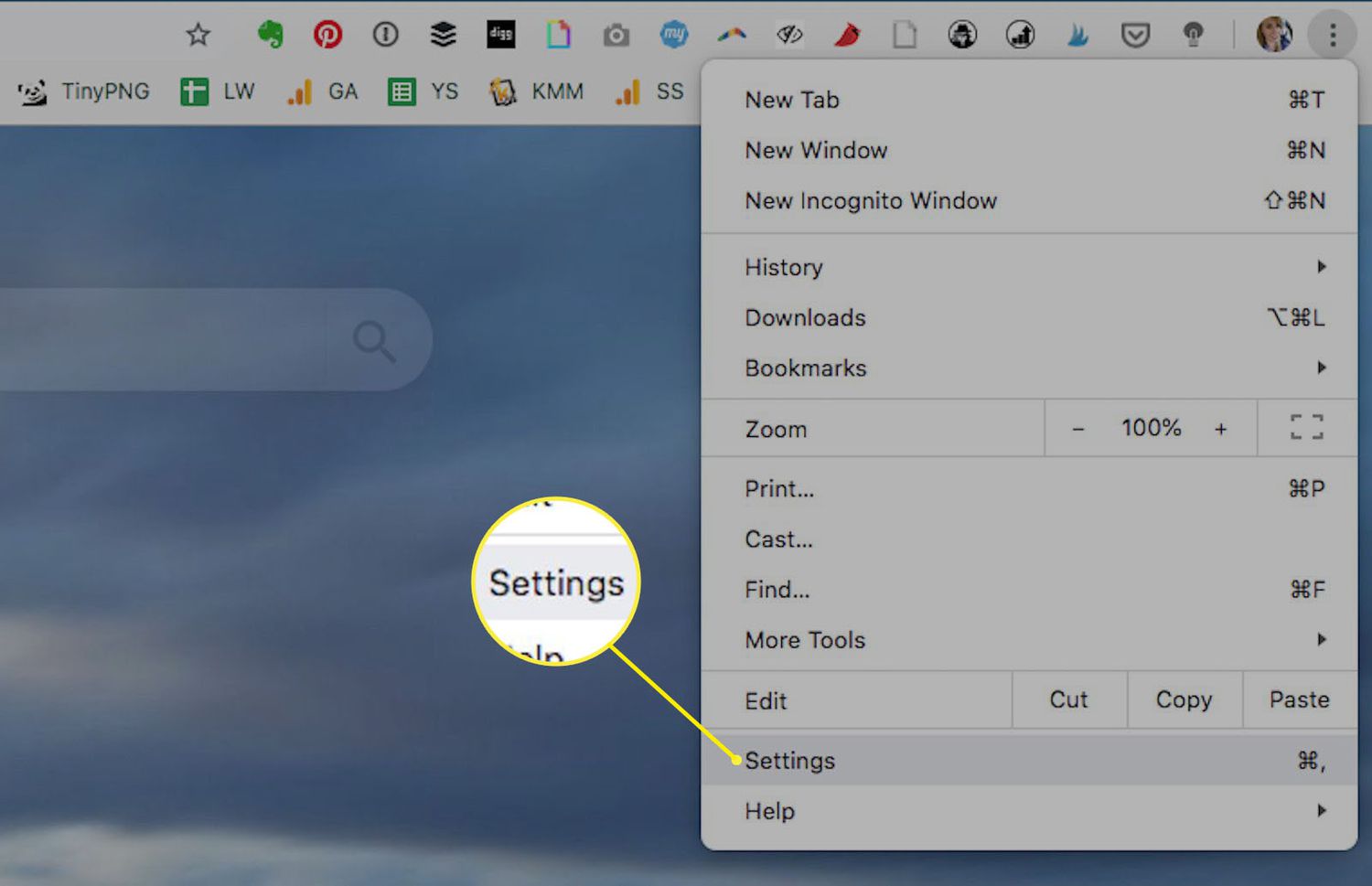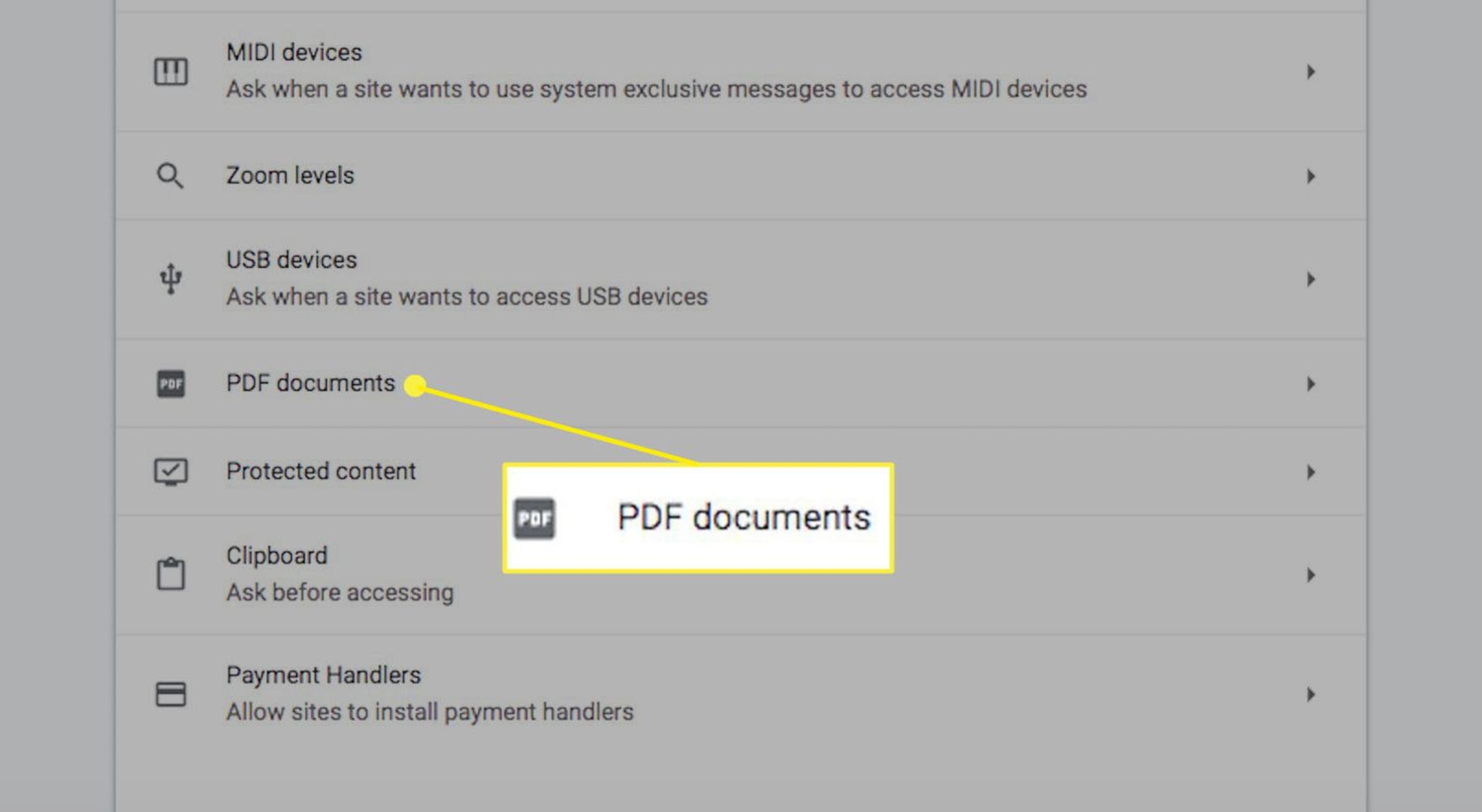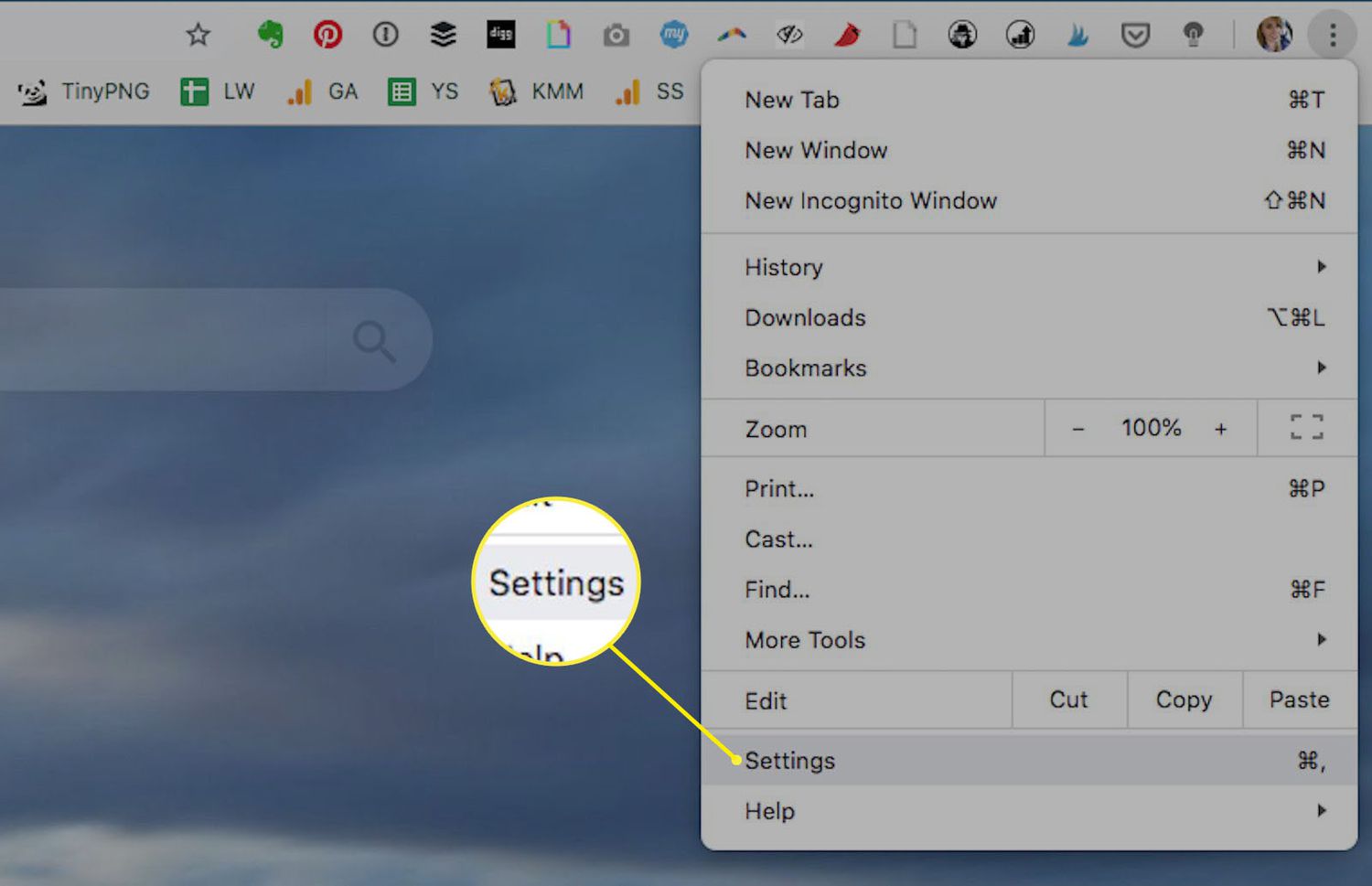Introduction
Opening a PDF in the Chrome browser can be a convenient and efficient way to access and view PDF files without the need for additional software. Whether you're reading a document, reviewing a report, or simply browsing through a digital booklet, Chrome offers several methods to seamlessly open PDF files directly within the browser interface. This eliminates the hassle of downloading and launching separate PDF reader applications, streamlining the process and enhancing user experience.
In this article, we will explore various methods to open PDF files in Chrome, catering to different preferences and needs. From utilizing built-in browser features to leveraging Chrome extensions and integrating with Google Drive, there are multiple approaches to suit individual requirements. By understanding these methods, users can optimize their PDF viewing experience and make the most of Chrome's capabilities.
As we delve into each method, we will provide step-by-step instructions and insights to ensure a smooth and hassle-free experience. Whether you're a seasoned Chrome user or new to the platform, this guide aims to equip you with the knowledge and tools to effortlessly access and interact with PDF files within the familiar environment of the Chrome browser.
Let's embark on this journey to discover the diverse ways of opening PDFs in Chrome, empowering you to leverage the full potential of this popular web browser for seamless PDF viewing.
Method 1: Using the Chrome Browser
Opening a PDF file directly within the Chrome browser is a straightforward and efficient process. Chrome's built-in PDF viewer allows users to seamlessly access and interact with PDF documents without the need for external software or plugins. This method is particularly convenient for individuals who prefer a streamlined approach to viewing PDFs and leveraging the browser's native capabilities.
To open a PDF in Chrome, simply follow these steps:
-
Navigate to the PDF File: Locate the PDF file you wish to open using the Chrome browser. This can be achieved by either clicking on a direct link to the PDF or by accessing the file from your local storage.
-
Click to Open: Once the PDF file is accessible within the browser, click on the file link or icon. Chrome will automatically initiate the PDF viewer, seamlessly displaying the contents of the PDF within the browser window.
-
Interact with the PDF: Upon opening the PDF, users can take advantage of various features offered by Chrome's built-in PDF viewer. This includes options to zoom in and out, navigate through pages, search for specific text within the document, and even print the PDF directly from the browser interface.
-
Download or Save: If desired, users can also opt to download the PDF file to their local storage or save it to a designated location for future access. Chrome provides a simple and intuitive download interface, allowing users to manage their downloaded files with ease.
By utilizing the native PDF viewing capabilities of the Chrome browser, users can seamlessly access and interact with PDF documents without the need for external software or additional steps. This method offers a hassle-free approach to opening PDFs, catering to the preferences of individuals who value simplicity and convenience in their browsing experience.
Whether you're accessing PDFs from the web or from your local device, Chrome's built-in PDF viewer ensures a smooth and efficient viewing experience, empowering users to engage with PDF content seamlessly within the familiar environment of the Chrome browser.
Method 2: Using a Chrome Extension
In addition to the built-in capabilities of the Chrome browser, users have the option to enhance their PDF viewing experience by leveraging Chrome extensions specifically designed for handling PDF files. These extensions offer additional features and functionalities, allowing users to customize their PDF viewing experience and access advanced tools directly within the browser interface.
To utilize a Chrome extension for opening PDF files, follow these steps:
-
Explore the Chrome Web Store: Open the Chrome Web Store by clicking on the Apps shortcut in the bookmarks bar or by typing "chrome://extensions/" in the address bar and pressing Enter. From the Chrome Web Store homepage, navigate to the Extensions section and search for "PDF viewer" or "PDF reader" to explore the available options.
-
Select and Install the Extension: Browse through the list of PDF-related extensions and select one that aligns with your preferences and requirements. Consider factors such as user ratings, reviews, and the specific features offered by each extension. Once you've identified a suitable extension, click on the "Add to Chrome" button to initiate the installation process.
-
Grant Necessary Permissions: When prompted, grant the necessary permissions for the extension to integrate with your Chrome browser. This may include access to your PDF files, the ability to display PDF content within the browser, and other relevant permissions required for the extension to function effectively.
-
Access and Open PDF Files: After the installation is complete, the PDF extension will be seamlessly integrated into your Chrome browser. You can now open PDF files directly within Chrome, leveraging the additional features and tools provided by the installed extension. This may include options for annotation, advanced viewing modes, document organization, and more, depending on the specific capabilities of the chosen extension.
By utilizing a Chrome extension tailored for PDF handling, users can personalize their PDF viewing experience and access a diverse range of features directly within the Chrome browser. Whether you require advanced annotation tools, seamless integration with cloud storage services, or enhanced document management capabilities, the right PDF extension can significantly enhance your browsing experience and streamline your interaction with PDF files.
With the flexibility and customization offered by Chrome extensions, users can tailor their PDF viewing experience to align with their specific preferences and workflow requirements. This method provides a versatile approach to opening and interacting with PDF files, empowering users to leverage the full potential of Chrome extensions for seamless PDF handling directly within the browser interface.
Method 3: Using Google Drive
Utilizing Google Drive to open PDF files in the Chrome browser offers a seamless and integrated approach to accessing and interacting with PDF documents. Google Drive serves as a versatile cloud storage platform that seamlessly integrates with the Chrome browser, allowing users to leverage its robust features for managing and viewing PDF files directly within the familiar environment of Chrome.
To open a PDF file using Google Drive in Chrome, follow these steps:
-
Access Google Drive: Begin by navigating to Google Drive through the Chrome browser. You can access Google Drive by entering "drive.google.com" in the address bar and pressing Enter. If you're not already signed in, you will be prompted to log in to your Google account.
-
Upload or Locate the PDF File: Once in Google Drive, you have the option to upload a PDF file from your local device or locate an existing PDF file stored in your Google Drive. To upload a PDF, click on the "New" button and select "File upload." If the PDF is already in your Google Drive, simply locate the file within your drive's folder structure.
-
Open the PDF: After uploading or locating the PDF file, you can open it directly within the Chrome browser. Click on the PDF file to initiate the preview and viewing process. Google Drive seamlessly integrates with Chrome's native PDF viewer, allowing you to access the contents of the PDF within the browser interface.
-
Interact with the PDF: Once the PDF is open, you can take advantage of various features offered by Google Drive and Chrome's built-in PDF viewer. This includes options to zoom in and out, navigate through pages, search for specific text within the document, and even print the PDF directly from the browser interface.
-
Additional Collaboration and Sharing: Google Drive offers collaborative features, allowing users to share PDF files with others, collaborate on document editing, and manage file permissions. This makes it a versatile platform for not only opening PDF files but also for seamless collaboration and document management.
By leveraging Google Drive's integration with the Chrome browser, users can seamlessly access and interact with PDF files, while also benefiting from the collaborative and organizational features offered by Google Drive. This method provides a streamlined and efficient approach to opening and managing PDF files, catering to the preferences of individuals who value cloud-based storage and collaboration capabilities.
Whether you're accessing PDFs from your local device or leveraging the cloud-based storage and collaboration features of Google Drive, opening PDF files in Chrome through Google Drive offers a versatile and integrated solution for seamless PDF handling directly within the browser interface.
Method 4: Using the Adobe Acrobat Extension
Utilizing the Adobe Acrobat extension in the Chrome browser offers a comprehensive and feature-rich solution for opening and interacting with PDF files. Adobe Acrobat, a renowned platform for PDF management and editing, provides an extension that seamlessly integrates with Chrome, empowering users to access advanced PDF handling capabilities directly within the browser interface.
To leverage the Adobe Acrobat extension for opening PDF files in Chrome, follow these steps:
-
Install the Adobe Acrobat Extension: Begin by navigating to the Chrome Web Store and searching for the Adobe Acrobat extension. Once you've located the extension, click on the "Add to Chrome" button to initiate the installation process. The extension seamlessly integrates with your Chrome browser, providing access to Adobe Acrobat's powerful PDF management tools directly within the browser interface.
-
Grant Necessary Permissions: When prompted, grant the necessary permissions for the Adobe Acrobat extension to integrate with your Chrome browser. This may include access to your PDF files, the ability to display PDF content within the browser, and other relevant permissions required for the extension to function effectively.
-
Access and Open PDF Files: After the installation is complete, the Adobe Acrobat extension will be seamlessly integrated into your Chrome browser. You can now open PDF files directly within Chrome, leveraging the advanced features and tools provided by Adobe Acrobat. This includes options for advanced annotation, editing, document organization, and seamless integration with Adobe Acrobat's cloud services.
-
Interact with Advanced Features: Once the PDF is open, users can take advantage of Adobe Acrobat's extensive feature set, including advanced annotation tools, document editing capabilities, and seamless integration with Adobe's cloud services. This allows for a comprehensive and tailored PDF viewing and management experience directly within the Chrome browser.
By utilizing the Adobe Acrobat extension, users can elevate their PDF handling experience, accessing advanced tools and features directly within the familiar environment of the Chrome browser. Whether you require advanced editing capabilities, robust annotation tools, or seamless integration with Adobe's cloud services, the Adobe Acrobat extension provides a comprehensive solution for managing and interacting with PDF files seamlessly within Chrome.
With the Adobe Acrobat extension seamlessly integrated into the Chrome browser, users can harness the full power of Adobe's PDF management tools, enhancing their PDF viewing and editing experience while benefiting from the convenience of accessing these features directly within the browser interface.
Conclusion
In conclusion, the diverse methods for opening PDF files in the Chrome browser offer users a range of options to seamlessly access and interact with PDF documents. Whether utilizing the built-in capabilities of the Chrome browser, leveraging specialized Chrome extensions, integrating with Google Drive, or harnessing the power of the Adobe Acrobat extension, individuals can tailor their PDF viewing experience to align with their specific preferences and workflow requirements.
By exploring these methods, users can optimize their PDF handling experience, benefiting from the convenience, flexibility, and advanced features offered by each approach. The built-in PDF viewer of the Chrome browser provides a hassle-free and intuitive way to open PDF files directly within the browser interface, catering to individuals who value simplicity and efficiency in their browsing experience.
Furthermore, the availability of Chrome extensions tailored for PDF handling empowers users to personalize their PDF viewing experience, accessing advanced tools and features directly within the Chrome browser. This method offers a versatile approach to opening and interacting with PDF files, allowing users to customize their PDF handling experience to align with their specific requirements.
The integration of Google Drive with the Chrome browser provides a seamless and integrated solution for accessing and managing PDF files, offering cloud-based storage and collaboration capabilities that enhance the overall PDF handling experience. Users can seamlessly open PDF files in Chrome through Google Drive, benefiting from the collaborative and organizational features offered by the platform.
Additionally, the Adobe Acrobat extension presents a comprehensive and feature-rich solution for opening and interacting with PDF files in the Chrome browser. By seamlessly integrating with Chrome, the Adobe Acrobat extension empowers users to access advanced PDF management tools and features, elevating their PDF viewing and editing experience within the familiar environment of the browser.
In essence, the methods outlined in this guide cater to the diverse needs and preferences of users, offering a range of options to open PDF files in Chrome. Whether prioritizing simplicity, customization, cloud integration, or advanced PDF management capabilities, individuals can leverage these methods to enhance their PDF handling experience and make the most of the Chrome browser's capabilities. By understanding and utilizing these methods, users can seamlessly access and interact with PDF documents, optimizing their browsing experience and productivity.























